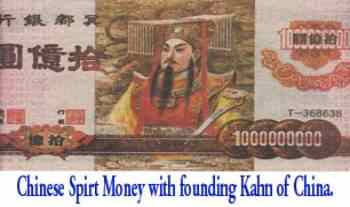 Galloping Geezer
Galloping Geezer


 Jack Downey Comments on Canadian Issues to Inform and Amuse.
Jack Downey Comments on Canadian Issues to Inform and Amuse.
Photo by Julie Ann Biggs
 Hey Brother Can You Spare a Dime?
Hey Brother Can You Spare a Dime?
(or some Amber, beads, cowries, drums, eggs, feathers, gongs, hoes, ivory, jade, kettles, leather, mats, nails, oxen, pigs, quartz, rice, salt, thimbles, umiacs, vodka, wampum, yarns, or zappozats (decorated axes))
During the last century, there was 'The Great Depression' from 1929 through to the days we went to war against the Axis Powers of Germany, Italy and Japan.
The depression put millions out of work and destroyed a generation.
People did not want government assistance, but wanted the dignity of earning their daily bread.
One of the 1920 songs was titled "Hey Brother Can You Spare a Dime."
Ten cents could feed you for a day or at least help to get rid of that gnawing feeling inside
your shrunken belly . Women sold their bodies for not much more to feed their children.
How could a little piece of silver come to mean so much? Money, it is claimed,
is the root of all evil. Not so, says I, "THE LACK OF MONEY IS THE ROOT OF ALL EVIL!"
When we are without money, we say we are "broke" (i.e. we are broken). Worldwide, the Great Depression broke millions. Let us delve into this mysterious thing called money. At one time or another in the past, each of the items in the title was used as money. Today our one cent coin costs 2 ½ cents to make. Some coins are worth so little that Haute Couture dressmakers use them as the form for cloth covered buttons because they are cheaper than button blanks! The beggars in India will fling some coins back at you, because they have almost no value. Our Loony and Toony are now considered to be of far less value than when they were $1.00 and $2.00 bills. Rumor has it that the $5.00 bill is being eyed as a future Foony. Canadian money is becoming like Donald Duck's nephews, Huey, Dewy, and Louie, i.e. always difficult to tell one from the other.
Approximately 1.2 billion people believe in "Spirit money." Basically, this money is a burnt offering to provide for you in the afterlife. Asians buy it by the wad and burn it for the ancestor's comfort and pleasure and, since the Gods cannot tell the difference between it and real money, they provide your ancestors with great comfort. Some light candles and put flowers out for relatives at their passing. Asians send money. My family has adopted this Asian tradition to commemorate my deceased relatives and friends. There are many renditions of "Spirit money" and everything inscribed on it is symbolic and should be heeded. By burning bills with pretty young Concubines on it, one is ensuring Grandfather's ability to pass on the family name. Storks are for long life. On the back (reverse), there is usually a Mansion on a lake. The obverse side or major feature on almost all bills is the great Kahn and first Emperor of China, "Emperor Chin." He looks out through a veil of pearls. He was one tough Fortune Cookie (you believe in them, why not spirit money?).


The History of Money
Source Modified from Federal Reserve Bank of Minneapolis
Consider this problem:
You catch fish for your food supply, but you're tired of eating it every day. Instead you want to eat some bread. Fortunately, a baker lives next door. Trading the baker some fish for bread is an example of barter, the direct exchange of one good for another.
However, barter is difficult when you try to obtain a good from a producer that doesn't want what you have. For example, how do you get shoes if the shoemaker doesn't like fish? The series of trades required to obtain shoes could be complicated and time consuming.
Early societies faced these problems. The solution was money. Money is an item, or commodity, that is agreed to be accepted in trade. Over the years, people have used a wide variety of items for money, such as seashells, beads, tea, fish hooks, fur, cattle and even tobacco.
Coins
Most early cultures traded precious metals. In 2500 B.C. the Egyptians produced metal rings for use as money. By 700 B.C., a group of seafaring people called the Lydians became the first in the Western world to make coins. The Lydians used coins to expand their vast trading empire The Greeks and Romans continued the coining tradition and passed it on to later Western civilizations Coins were appealing since they were durable, easy to carry and contained valuable metals.
During the 18th century, coins became popular throughout Europe as trading grew. One of the most widely used coins was the Spanish 8-reale. It was often split into pieces or bits to make change. Half a coin was 4 bits, a quarter was 2 bits, a term still used today.
Coins containing precious metals are an example of "commodity money." The item was traded because it held value. For example, the value of the coin depended upon the amount of gold and silver it contained.
Paper currency
The Chinese were the first to use paper money, beginning in the T'ang Dynasty (618-907 A.D.). During the Ming Dynasty in 1300 A.D., the Chinese placed the emperor's seal and signatures of the treasurers on a crude paper made from mulberry bark.
Representative money is tokens or pieces of paper that are not intrinsically valuable themselves, but can be exchanged for a specific commodity, such as gold or silver. In 1715 Maryland, North Carolina and Virginia issued a "tobacco note" which could be converted to a certain amount of tobacco. This type of money was easier to make large payments and carry than coin or tobacco leaves.
Fiat money is similar to representative money except it can't be redeemed for a commodity, such as gold or silver. The Federal Reserve notes we use today are an example of fiat money. In 1967 Congress authorized the U.S. Treasury to stop redeeming silver certificates in silver dollars or bullion beginning the following year. By 1970 silver was removed from the production of coins. The old coins were gradually removed from circulation and replaced with new copper-cored coins that were faced or "clad" with layers of an alloy of 75 percent copper and 25 percent nickel -- the same alloy used in nickels.
People are willing to accept fiat money in exchange for the goods and services they sell only because they are confident it will be honored when they buy goods and services. The Federal Reserve is responsible for maintaining the integrity of U.S. currency by setting monetary policy -- controlling the amount of money in circulation -- to keep prices stable. If prices remain stable, people have confidence that the dollar they use to buy goods and services today will buy a similar amount in the future.
Money serves three purposes:
1. Medium of Exchange
People accept money in trade for goods and services.
2. Standard of Value
The value of a good or service can be measured with money.
For example, a car with a price of $2,000 is worth twice as much as a car with a price of $1,000.
3. Store of Value
Money can be saved and used in the future.
Canadian money in Canadian
Canadian money en Francaise.
See also:
Money Facts, via the Bureau of Engraving and Printing
Jack C. Downey CD
Send comments to: Jack
Thanks for your help
best regards
www.CanadianCulture.com

Get Involved!
Your Ideas are Important!
Content is contributed by various Canadians and does not necessarily
reflect the views of canadianculture.com.
|
 


|

